On a real Overland trip, you’ll find yourself miles away from the next town, with no hope to reach a restaurant for dinner. That’s not a reason for starving or counting exclusively on snacks, though. With a little planning, enjoying great and healthy food on the trails is fun and easy…
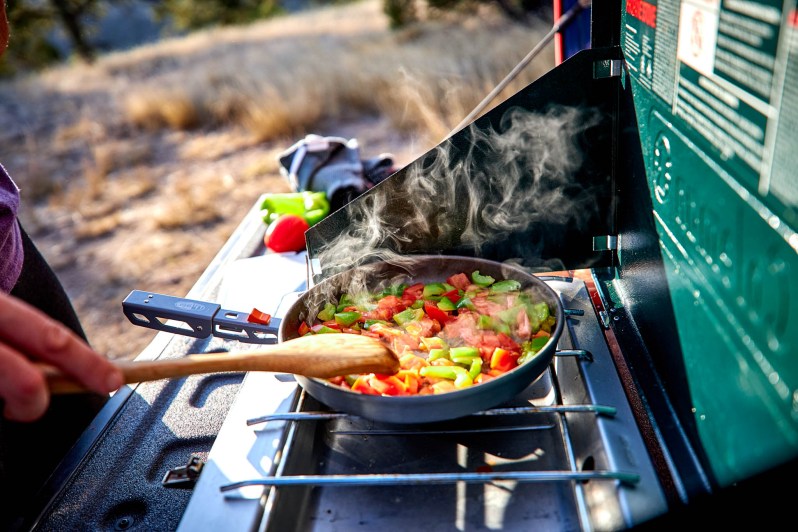
It’s relatively easy to go camp for a weekend and to pack in the cooler or the fridge some great appetizers, enough food for some amazing sandwiches and even eggs and bacon for breakfast. But when the trip is longer and you need to cook across days, weeks, or even months, as we did on our Continental Divide trip, it becomes a bit challenging to maintain the same level of quality.
Equipment
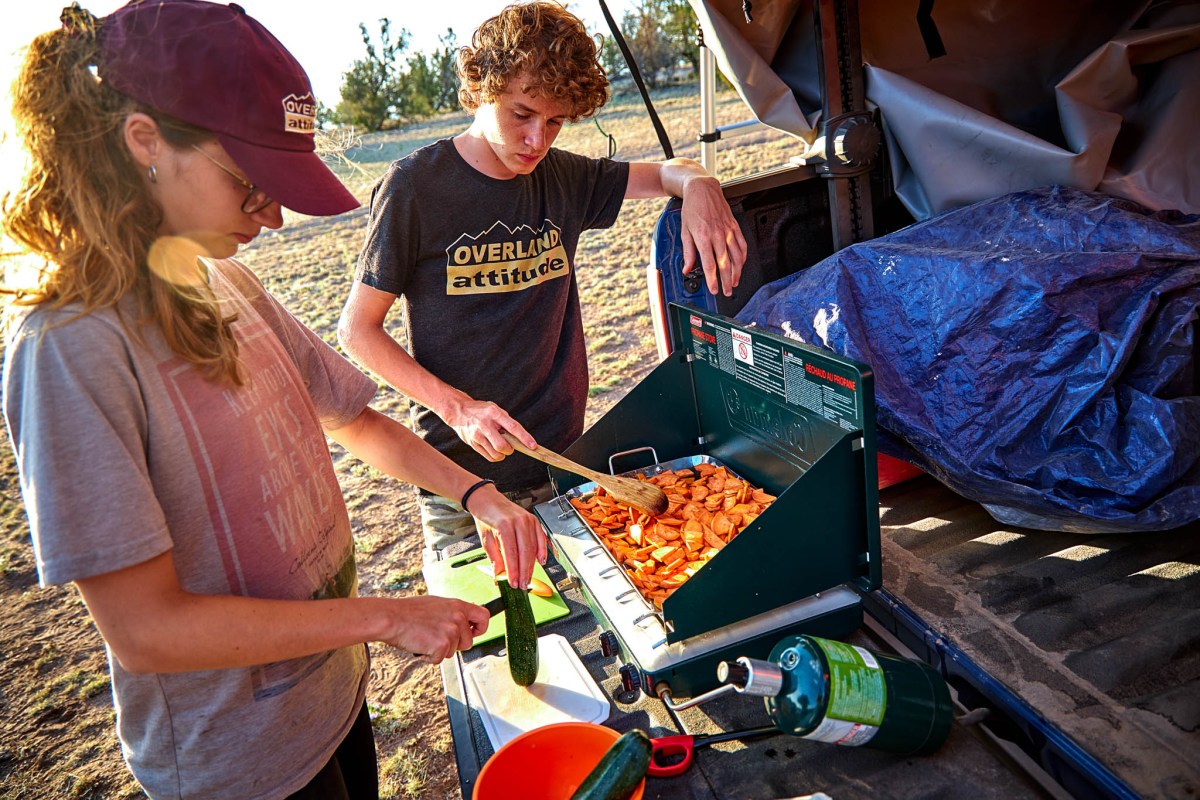
In the kitchen, as in the garage, it all starts with the right tools. Cooking in the back of a truck means you’ll have less room than in your usual kitchen, and investing in a compact and foldable kit will save some real estate on your tailgate! We used the GSI Outdoors Pinnacle Base Camper cook set during 40 days on the Continental Divide and it made all the difference of the world. The cherry on the cake, the hard-anodized aluminum doesn’t stick and allows for quick cleaning, with very little water wasted.
Our silverware also came from GSI in the form of the Destination Kitchen Set 24, with the same idea of organizing everything in the most compact form. The hard plastic utensils and ceramic knife were, here again, very easy to clean up. A large stove with side panels to protect the fire from the wind is a must. Debating the pros and cons of a cooler versus a fridge would take forever, and it’s ultimately up to everybody to make his own choice. Yet it seems that the extra expense of the fridge is only worth it if you plan to stay longer than 4 days in the same spot. If you’re on the move, you’ll hit a town every two or three days to get gas anyway, and then the cooler might suffice. It’s way less expensive and doesn’t require any heavy installation in your vehicle. Of course, you’ll have to buy ice at the gas station, but then you will be able to use the water from the melted ice to wash the dishes.
Essential Groceries
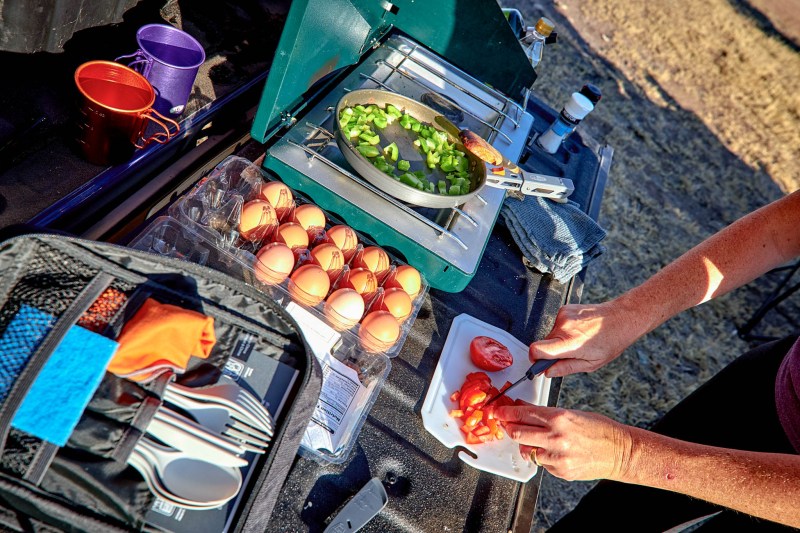
Buying food on the road when your favorite grocery store is nowhere in sight might be frustrating at first. But there are still some ingredients that you can buy in the smallest stores in the smallest towns. Here is what our grocery list would look like:
- Eggs
- Bread or taco shells
- Canadian bacon, ham, and/or salami
- Tomatoes, zucchini, and peppers
- Fruits (apples, bananas, grapes, or peaches)
- Cans of ravioli, diced tomatoes, green beans, black beans, corn, tuna
- Cauliflower crumbles
- Pasta
- Pre-cooked rice
- Chips and crackers
- Cheese (like slices of Swiss cheese, and goat cheese for salads and toasts)
- Apple Sauce and breakfast biscuits with chocolate chips for an easy dessert
Of course, salt, pepper, Italian seasoning, olive oil, and balsamic vinegar last longer and are not on this list, but were definitely used daily for cooking.
Breakfast and Lunch
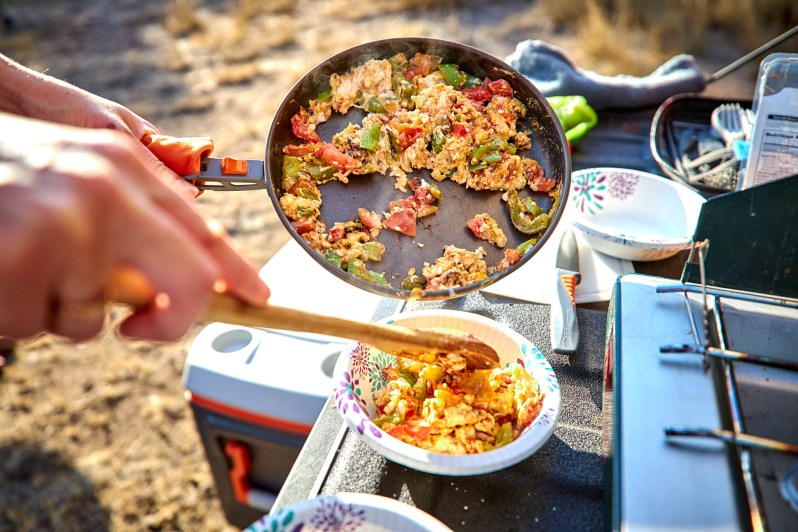
Starting the day with a solid breakfast is mandatory. When you don’t need to leave your camping spot in a hurry, taking the time to cook something energetic will help to go through the day. We found that cereals and milk were inadequate, and our teenagers understood that pretty well. Instead, we cooked scrambled eggs with diced bacon, peppers, and tomatoes, sometimes mushrooms, to bring proteins and fibers. Once the plates emptied, two or three slices of wheat bread with some Nutella, a form of chocolate that will stand up to any cold or warm conditions, makes a great source of carbohydrates with just enough sugar to please the young kids. Those concerned about their diet can replace the toasts with fruit. At lunch, stopping for too long seems like a waste of time. Using the wheat bread to make sandwiches with ham, cheese, pickles, lettuce, and a sliced tomato will give everybody a big smile and doesn’t require a lot of maintenance since there’s no gas cooking involved, nor dishes to wash. But it all depends on the nature of each day, and sometimes you’re in such a nice spot that you’ll enjoy cooking a great meal there.
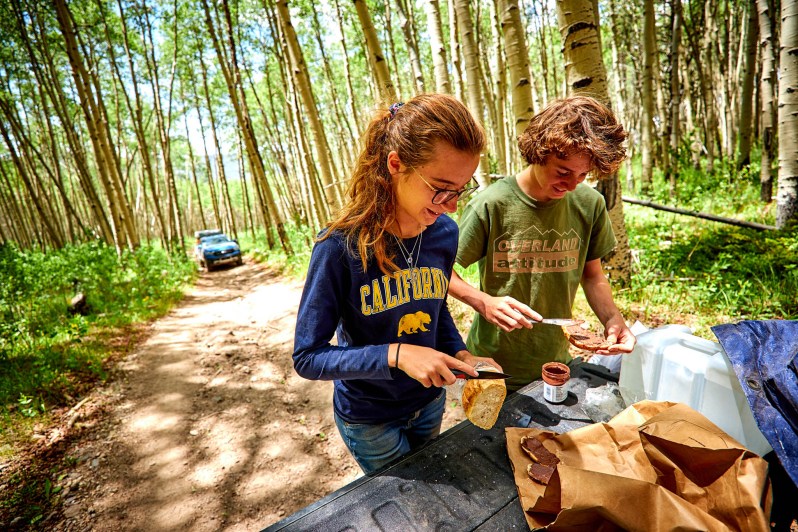
Dinner
At dusk, when the camp is settled, you always have more time to cook something nice. Still, you don’t want to go through over-complicated recipes, since you already drove most of the day. The few recipes we enjoyed the most, from the basic opening of a can of ravioli on our lazy days to the grill of a big piece of beef, are listed below:
- Veggie Skillet: Mix in a pan some diced sweet potatoes, sliced zucchini, tomatoes, and Canadian bacon, with a pinch of Italian seasoning.
- Gluten-free Caulisotto: In a saucepan, mix cauliflower rice, tuna, diced tomatoes, black beans, and Italian seasoning.
- Colored Risotto: Cook some ready rice using very little water, then add green beans, corn, crushed tomatoes and slices of hot dogs.
- Steaks: Grill sirloin steaks on the campfire with yellow peppers and zucchini.
- Chicken Kabobs: Grilled skewers of chicken with bell peppers, zucchini, and red onion, marinated in olive oil and honey
- Of course, with a campfire, it’s always a great moment for the family to end the dinner sharing s’mores!
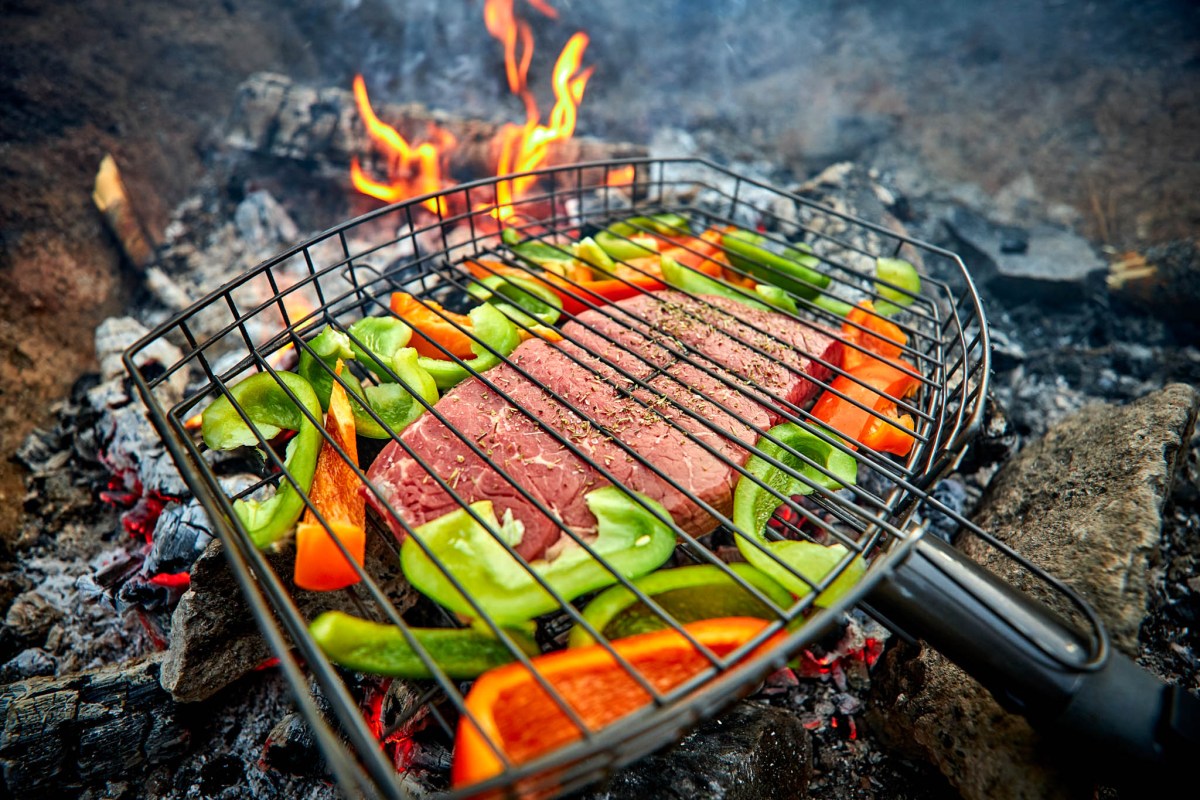
Sharing the Outdoor Kitchen
If you don’t usually cook at home, using your time off-the-grid will allow you more time to experience simple yet healthy recipes. The goal is to feed yourself and your crew, and while it’s not easy to be creative every night, there is room for some fantasy. The good part is that everybody can participate and bring their own touch, kids included. It’s not like you’re the cook for a fancy restaurant, after all. At the end of the trip, what could have been a punishing duty will be remembered as a great sharing time. It will still be cool to go back home and find a nice, clean, and roomy kitchen!



